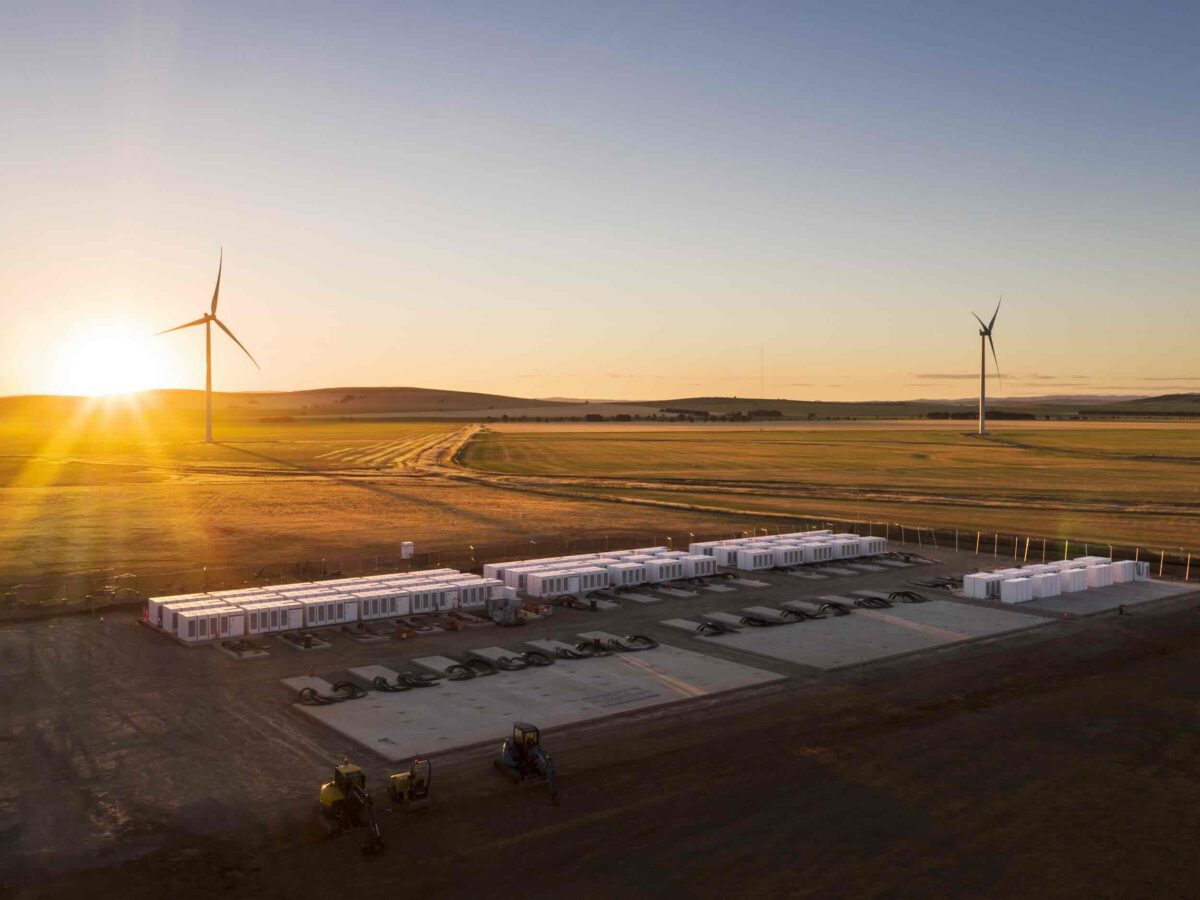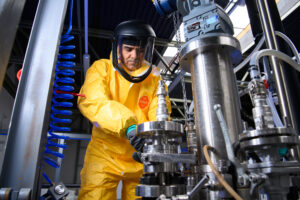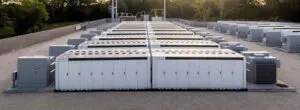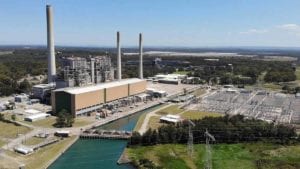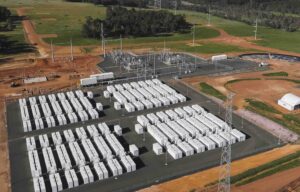A surge in revenues from its rapidly growing portfolio of big battery projects in the last quarter has enabled French renewable and storage developer Neoen to largely offset a decline in revenue from its wind and solar assets in the latest quarter, and for the first nine months of the year.
The company – currently subject to an agreed $A11 billion takeover offer from global asset manager Brookfield – says its nine-month revenues to the end of September totalled €378.4 million ($A624 million), down five per cent from the same period a year ago.
The wind and solar revenue declines were anticipated given that several key projects – including the Western Downs solar farm and the Kaban wind farm in Queensland – had migrated from often higher merchant (spot) prices to fixed, long term but lower priced contracts.
Wind and solar still provide around 85 per cent of total revenue for the company, but that balance is likely to change significantly in coming years as a number of big battery projects in Australia – including the country’s biggest at Collie in Western Australia – are completed.
In the third quarter, the existing fleet of big batteries, led by the original Tesla big battery at Hornsdale and the Victoria Big Battery, lifted revenues by 77 per cent to €24.6 million, helped along by some volatile pricing in the month of August.
That took the nine-month revenues from the company’s big battery operations to €54 million, a rise of 23 per cent, compared to the six per cent and 10 per cent declines from its wind and solar assets.
The importance of the battery portfolio is expected to grow significantly in coming years as it completes the two stages of the huge 560 MW, 2240 MWh Collie battery, and brings the 239 MW, 487 MWh Blyth battery online.
It is also building the second 270 MW, 540 MWh stage of the Western Downs battery, and enjoys the first full year of the 117 MW, 234 MWh Capital battery in the ACT.
The Collie battery will be especially lucrative, at least over the short term, because of the nature of its contract to time shift rooftop solar from the middle of the day to the evening peak.
The impact of those contracts, should be seen in the fourth quarter results, and were the reason for the company to significantly upgrade its revenue forecasts for the 2025 and 2026 fiscal years.
“We are seeing increasing revenues in the fourth quarter, which is driven by new assets coming online, and I would flag, in particular, the completion of Collie Stage 1 battery, which is now operating and providing substantial revenue,” CFO Yves-Eric François told analysts in an investor briefing overnight.
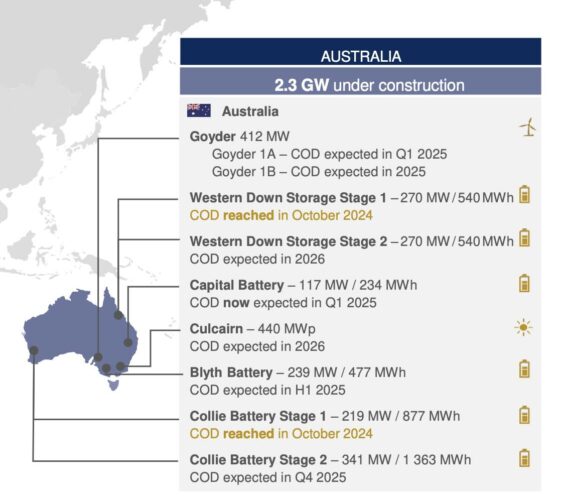
Neoen currently has 5.2 gigawatts (GW) of assets in operation and another 3.5 GW under construction, with 2.3 GW of this in Australia (See table above). The company has a total portfolio, excluding early stage projects, of more than 30 GW of wind, solar and storage capacity.
The company is being forced to sell its Victorian assets, including the Victoria big battery, the Bulgana wind farm and battery, the Nurmurkah solar farm and a handful of development projects, because of the Brookfield purchase and that company’s controlling stake in local network operator Ausnet.
“We are sorry to let those assets go,” CEO Xavier Barbaro said in the briefing.
“Of course, it’s attracting some interest, as you can imagine. It’s a young fleet, working well. And of course, every time we sell something, we are, in a way, feeding our competitors.
“But we are big enough in Australia and well ahead enough of the pack of competitors, that we do not see harming ourselves from that sale of assets.”
Barbaro also noted price reductions in key technologies, particular battery storage and wind, and flagged that the company is considering using Chinese-made turbines in Australia for the first time.
See our story here: “Not always a great quality:” Leading wind developer may switch from western to Chinese turbines
He said prices for battery storage continues to fall.
“We do see some very competitive prices for batteries today, and we believe that this trend is here to stay,” Barbaro said. “I cannot give you exact numbers, because it always depends, of course, on the features of the project, but less than half a million euro per megawatt hour is a good proxy of what we see.”
Barbaro also flagged that the company is expecting to land contracts for the growing data-centre market, particularly given Brookfield’s close ties with Microsoft.

